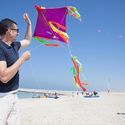-
About
- About Listly
- Community & Support
- Howto
- Chrome Extension
- Bookmarklet
- WordPress Plugin
- Listly Premium
- Privacy
- Terms
- DMCA Copyright
- © 2010-2025 Boomy Labs


 Mike Smith
Mike Smith
Listly by Mike Smith
The native people of Thailand live on hillsides in the north of the country. There are several clans and subgroups but six main tribes have been defined, each dwelling in a separate village.

Becoming popular among holidaymakers is the mountainous north of Thailand; in particular Chiang Mai. Resort properties perched on lofty hillsides offer breathtaking panoramic views over the hilltops, while others like Anantara Chiang Mai Resort occupy the banks of the tranquil Mae Ping River. The uplands are also home to hillside tribes like the Karen. The Karen people form the largest tribe, with a population of approximately three hundred thousand. They originally hailed from Myanmar and followed Animism or Buddhism but a large number have since converted to Christianity after being approached by missionaries. The tribe has three main subgroups Sgaw, Pgo and Kayah, which are: White, Black and Red respectively. Their traditional costume is a tunic with a v-shaped neck and a turban. Unmarried women are identified by a long white tunic with the traditional neckline. Their livelihood is centered around agriculture, primarily rice and weaving.

The Hmong people are sometimes known as Meo. They originate from Yunnan and belong to the Animistic faith. They are best known for their nomadic, independent lifestyle and elaborate embroidery. The Hmong has two main subgroups: White and Green. It is the Green Hmong that are largely found in Doi Suthep and Doi Inthanon in Chiang Mai. Their traditional dress consists of pleated, embroidered skirts and the men wear loose black trousers with decorative seams and hems.

The roots of the Lahu or Musor Tribe can be traced back to both Yunnan and Myanmar. There are five subgroups: Black, Red, Yellow, White and Lahu Sheleh. The Black Lahu account for almost eighty percent of the entire tribe. Black Lahu women don skirts with black and red jackets, while the men dress in baggy pants that are green or blue in colour. Their primary occupation is the cultivation of crops, mainly vegetables.

One of the neediest tribes is the Akha that finds its roots in Tibet and Myanmar. The Akha women dress up in loose indigo shirts that are decorated with coins, shells, beads and other knick knacks. On their heads, they wear an elaborate headdress. Unique pieces of silver jewellery handcrafted by Akha people can be found for sale in local markets.

The Mien tribe originated in Central China and they speak a dialect that is similar to the Hmong. They can be identified by their characteristic Chinese facial features. They live in secluded communities and are known for creating intricate embroidery and silver trinkets.

The smallest of the hill tribes are the Lisu people. The population of under thirty thousand traces their ancestry to Tibet and Yunnan. The Lisu people make a living from raising livestock and growing vegetables. The women of the tribe stand out in bright tunics, while the elders sport turbans with tassels.
